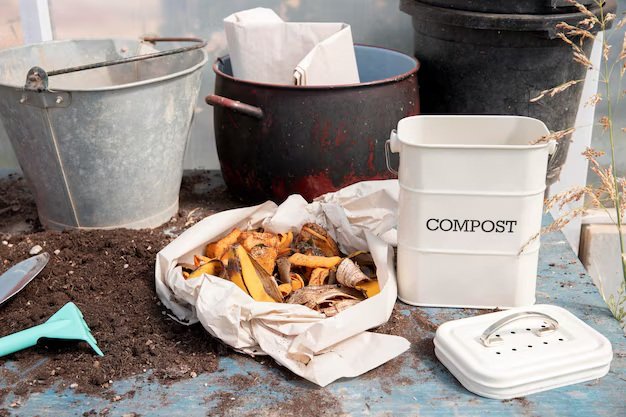Are Worms Good for Gardens?
I still remember the first time I spotted those pink, wriggling earthworms in the soil as a child. Back then, I thought they were just slimy creatures to avoid. But as I grew older and started gardening, I began to understand their true value. Worms aren’t just random visitors in our gardens; they’re essential workers, tirelessly improving the soil beneath our feet.
Earthworms play a crucial role in enhancing soil health. Their burrowing activities aerate the soil, allowing roots to breathe and water to penetrate more easily. As they consume organic matter, they break it down into nutrient-rich castings, enriching the soil and promoting plant growth.
In this guide, we’ll look into the world of garden worms, exploring why they’re beneficial, which species to welcome, and which to watch out for. We’ll combine scientific insights with practical advice to help you foster a thriving garden ecosystem.

In This Article
- What Are Worms Doing in Your Garden Soil?
- Personal Stories: Garden Transformations with Worm Power
- Case Studies and Research on Using worms to break down organic matter in garden soil (Vermicompost)
- Types of Garden Worms You Want (and Don’t Want)
- Common Misunderstandings About Worms
- How to Attract and Support a Healthy Worm Population
- Actionable Tips: How You Can Start Today
- Conclusion:
What Are Worms Doing in Your Garden Soil?
Nature’s Soil Engineers
As earthworms move through the soil, they create networks of tunnels that enhance aeration and water infiltration. This natural tilling process improves soil structure, allowing plant roots to access oxygen and nutrients more efficiently. According to a study published in Geoderma, earthworm activity significantly enhances soil aggregation, leading to better soil health.
Organic Matter Decomposition
Earthworms consume organic materials like fallen leaves and dead plants, breaking them down into smaller particles. This decomposition process results in the formation of humus, a rich organic component that improves soil fertility. Their digestive process transforms complex organic matter into simpler forms, making nutrients more accessible to plants.
Boosting Microbial Life
The digestive system of earthworms acts as a microbe incubator. As organic material passes through their gut, it is colonised by beneficial bacteria and fungi. These microorganisms are then excreted in worm castings, enriching the soil microbiome. Research indicates that earthworms modify soil bacterial and fungal communities, enhancing microbial diversity and activity.
Nutrient-Rich Castings
Worm castings, the excrement of earthworms, are a powerhouse of nutrients. They contain significantly higher concentrations of essential elements compared to the surrounding soil. Specifically, worm castings have been found to contain five times more nitrogen, seven times more phosphorus, and eleven times more potassium than typical soil. These nutrients are vital for plant growth, making worm castings an excellent natural fertiliser.
Supporting Plant Growth
The presence of earthworms in soil has a direct positive impact on plant productivity. A meta-analysis published in PubMed found that earthworm activity leads to a 25% increase in crop yield and a 23% increase in aboveground biomass. This enhancement is attributed to improved soil structure, increased nutrient availability, and a more active microbial community.
Learn More: What Plants Don’t Like Coffee Grounds
Personal Stories: Garden Transformations with Worm Power
1. Charles Dowding’s Garden Transformation
In a feature by The Sun, gardener Charles Dowding shared his experience with worm castings, often referred to as “black gold.” By incorporating worm castings into his compost, he observed remarkable improvements in plant growth and soil health. Dowding noted that even a small percentage of worm castings in potting mix led to more vigorous seedlings and healthier plants.
Ashley Day, director of Urban Wyrm, echoed these sentiments, emphasising the benefits of worm castings in enhancing soil structure and nutrient availability. He highlighted that worm castings are rich in enzymes and microbes, which make nutrients more accessible to plants, leading to increased yields and improved plant health.
2. Sara’s Swedish Garden Revival
In Sweden, gardener and blogger Sara Bäckmo observed a significant improvement in her garden’s soil health by simply adding organic mulch. She noted that earthworms were quick to reproduce in this environment, and their activity led to the production of substantial amounts of nutrient-rich vermicast. This natural process not only enriched the soil but also enhanced its structure, making it more conducive to plant growth.
3. Community Composting in Urban Gardens
In various urban settings, community gardens have embraced vermicomposting to manage organic waste and improve soil fertility. By introducing worm bins, these gardens not only reduce their environmental footprint but also produce rich compost that enhances plant growth. This practice fosters community engagement and sustainable gardening practices.

Case Studies and Research on Using worms to break down organic matter in garden soil (Vermicompost)
1. Texas State University: Educational Vermicomposting Initiative
At Texas State University, a pilot vermicomposting project was implemented using red wiggler worms (Eisenia fetida) to process cafeteria food waste. Approximately 25 pounds of food waste were collected weekly and combined with shredded paper waste. The vermicompost produced was used in university gardens and greenhouses. An economic analysis showed that the system was cost-effective, diverting waste from landfills and producing valuable fertiliser.
2. Green Campus Initiative: Vermicomposting in Tehran
A study conducted on a university campus in Tehran explored vermicomposting of green vegetable wastes like parsley, dill, and Persian leek. The waste was mixed with cow dung and paper waste, then processed using Eisenia fetida worms. The resulting vermicompost was found to be safe for agricultural use, containing less than 3 CFU/g of Salmonella sp. This initiative highlights the potential of vermicomposting in managing organic waste sustainably.
3. Boosting Bean Health in Ethiopia
In southern Ethiopia, a study conducted during the 2021 and 2022 cropping seasons examined the impact of vermicompost on common bean plants. The researchers found that applying vermicompost not only minimised the development of common bacterial blight—a serious plant disease—but also enhanced the plants’ overall growth and nodulation (the formation of beneficial root nodules). This suggests that vermicompost can improve both plant health and yield.
Types of Garden Worms You Want (and Don’t Want)
1. Red Wigglers (Eisenia fetida)
These small, reddish worms are champions of composting. They thrive in compost bins, breaking down organic waste into rich, nutrient-dense vermicompost. Red wigglers can consume their body weight in food daily, making them efficient decomposers. Their castings enhance soil structure and fertility, promoting healthy plant growth.
2. Nightcrawlers (Lumbricus terrestris)
Known for their deep-burrowing habits, nightcrawlers play a vital role in aerating the soil. Their tunnels improve water infiltration and root penetration, fostering a robust root system for plants. Additionally, their castings enrich the soil with nutrients, benefiting overall plant health.
3. Alabama Jumpers (Amynthas agrestis) – The Invasive Intruders
Alabama Jumpers, also known as Asian jumping worms, are invasive species that pose significant threats to garden ecosystems. Unlike beneficial earthworms, they consume the top layer of soil, depleting it of essential nutrients and organic matter. Their feeding habits disrupt soil structure, making it drier and less fertile, which hampers plant growth. Additionally, they outcompete native earthworms and other soil organisms, leading to a decline in biodiversity.
Important Tip
While many earthworms are beneficial, it’s crucial to be vigilant about invasive species like the Alabama Jumper. To protect your garden:
- Inspect soil, compost, and mulch for signs of jumping worms.
- Avoid introducing unknown soil or compost into your garden.
- Report sightings of invasive worms to the local agricultural extension.
Common Misunderstandings About Worms
Myth 1: More worms = Better soil instantly.
Truth: While earthworms enhance soil health, they require the right environment to thrive. They feed on decaying organic matter and need moist, well-aerated soil. Without these conditions, simply adding more worms won’t improve your soil. It’s essential to create a hospitable habitat for them to be effective.
Myth 2: You can “seed” worms into bad soil and fix it.
Truth: Introducing worms into compacted or nutrient-poor soil won’t yield results. Worms struggle in hard, dry, or toxic environments. Before adding worms, improve soil conditions by incorporating organic compost and mulch to enhance fertility and structure.
Myth 3: Worms eat live plant roots.
Truth: Generally, earthworms consume dead organic material, not live roots. However, in rare cases where decaying matter is scarce, some worms might nibble on living roots. Such instances are uncommon and typically don’t harm healthy plants.
How to Attract and Support a Healthy Worm Population
Here’s what worked best in my garden and for many experienced growers:
1. Add Organic Matter Regularly
Worms thrive on decomposing organic material. By consistently adding compost, shredded leaves, and organic mulch, you provide a steady food source that encourages worms to stay and multiply. This practice not only feeds the worms but also enriches the soil with nutrients, promoting plant growth.
2. Avoid Tilling
Tilling can disrupt the delicate ecosystem within your soil, destroying worm burrows and beneficial microorganisms. Adopting a no-till or minimal disturbance approach preserves soil structure, allowing worms to flourish and maintain their natural soil-enhancing activities.
3. Maintain Moisture Levels
Worms breathe through their skin and require moist (but not waterlogged) soil to survive. Applying a layer of mulch helps retain soil moisture, creating an ideal habitat for worms and reducing the need for frequent watering.
4. Provide Shade
Excessive sunlight and heat can be detrimental to worms. Using groundcover plants, mulch, or living mulches offers shade, keeping the soil cool and protecting worms from harmful UV exposure.
5. Be Patient
Establishing a thriving worm population doesn’t happen overnight. It takes time for worms to colonise and for the soil ecosystem to balance. Focus on long-term soil health, and over time, you’ll notice increased worm activity and improved plant vitality.
Learn More: What Do Ants Do for the Environment?
Actionable Tips: How You Can Start Today
Ready to welcome worms into your garden? Here’s how to begin—no green thumb required.
- Start a Worm Bin (Vermicompost): You don’t need a backyard to compost. A simple plastic tote with ventilation holes, some moist shredded paper, and red wiggler worms (Eisenia fetida) is all it takes. These worms can consume up to half their weight in food scraps daily, turning waste into nutrient-rich compost.
- Top-Dress Your Garden with Compost: Sprinkle a thin layer of compost over your soil in spring or fall. This practice improves soil structure, enhances water retention, and provides essential nutrients to plants.
- Embrace Organic Methods: Reduce or eliminate chemical fertilisers. Organic alternatives like compost and mulch not only nourish plants but also protect waterways from nutrient runoff.
- Use Deep Mulching: Apply a thick layer of organic mulch to retain soil moisture, suppress weeds, and create a hospitable environment for worms and beneficial microbes.
- Educate Your Community: Share your composting journey with neighbours or local gardening groups. Community composting initiatives can amplify the benefits and foster environmental stewardship.
- Be Mindful of Invasive Worms: While most earthworms are beneficial, invasive species like the Alabama Jumper (Amynthas agrestis) can disrupt local ecosystems. Ensure you’re introducing native or non-invasive species to your composting system.
Conclusion:
Worms are not a silver bullet, but they are a critical part of a thriving, living soil ecosystem.
The more we work with nature instead of against it, the richer and more productive our gardens become.
“Feed the soil, and the soil feeds you.” – A proverb I heard from a wise farmer, and one that’s proven true in every patch of earth I’ve ever tended.
So next time you see a worm, take a moment to thank them — and maybe toss on a little extra mulch as a reward.







